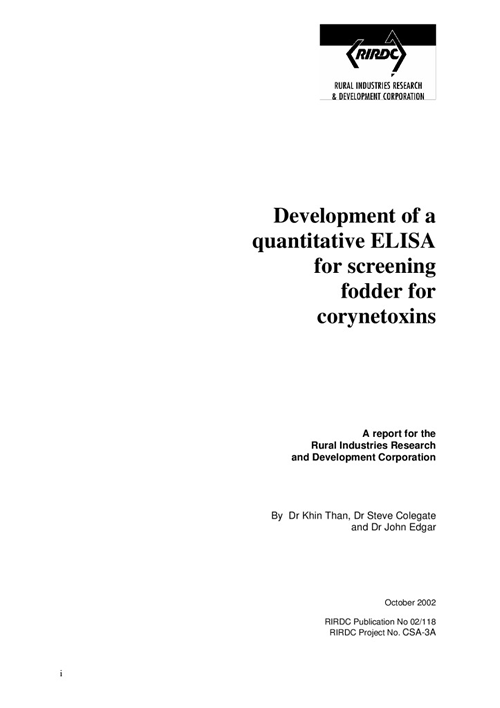The aim of this project was to develop an enzyme-linked-immuno-sorbent-assay (ELISA) to screen fodder for the presence of corynetoxins. The assay will help ensure that Australian fodder does not cause poisoning of livestock that could lead to long-term disruptions to trade.
Australian fodder contaminated by corynetoxins, the natural chemicals that cause annual ryegrass toxicity (ARGT), poisoned beef and dairy cattle in Japan in 1996. Japanese authorities questioned the safety of meat and milk from livestock exposed to corynetoxins and they banned Australian fodder until a quality assurance (QA) program was established. The QA protocol adopted by the industry is based on ELISA detection of the bacterial source of the corynetoxins, Rathayibacter (Clavibacter) toxicus. Whilst it is assumed that the presence or absence of the bacterium is a good indication of the presence of corynetoxins, this may not necessarily be the case. It needs to be conclusively demonstrated that a low bacterial antigen ELISA result does indeed relate to a low corynetoxin level. Furthermore, because the bacterium does not produce corynetoxins continuously throughout its life cycle, there is a high chance of rejecting fodder based on the bacterium antigen ELISA result, whereas the level of corynetoxins may in fact be very low and thereby the fodder would be safe for stock.





